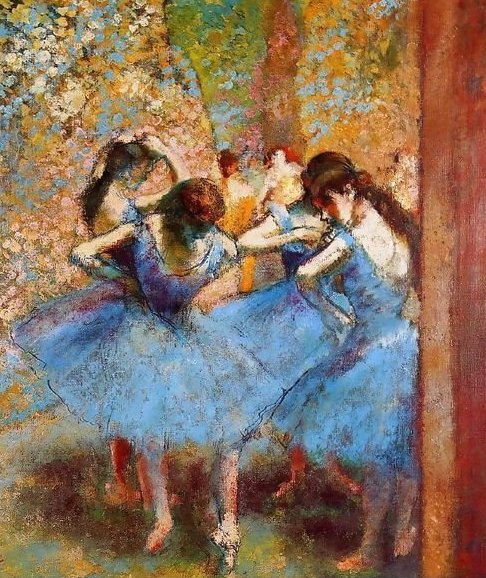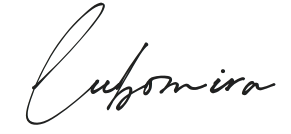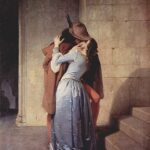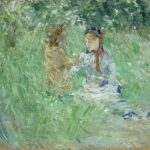In her book The Creative Habit, choreographer Twyla Tharp shares some interesting insights on the subject of our unique creative self. Many years ago she studied with choreographer Merce Cunningham in New York City, who had a small corner studio on the second floor at 14th Street and 8th Avenue, with windows on two sides.
“During breaks in classes, I watched a lot of traffic out of those windows, and I observed that the traffic patterns were just like Merce’s dances – both appear random and chaotic, but they’re not. It occurred to me that Merce often looked out of those windows, too. I’m sure the street pattern was consoling to him, reinforcing his discordant view of the world. His dances are all about chaos, and dysfunction. That’s his creative DNA. He’s very comfortable with chaos and plays with it in all his work. My hunch is that he came to chaos before he came to that studio, but I can’t help wondering if maybe he selected the place because of the chaos outside the windows.”
“Of course, when I looked out those windows, I didn’t see the patterns that Merce did, and I certainly didn’t find solace in their discordance. I didn’t ‘get it’ the way he did. I wasn’t hard-wired that way. It wasn’t part of my creative DNA. I believe that we all have strands of creative code hard-wired into our imaginations. These strands are as solidly imprinted in us as the genetic code that determines our height and eye color, except they govern our creative impulses. They determine the forms we work in, the stories we tell, and how we tell them. Perhaps you also suspect it when you try to understand why you’re a photographer, not a writer, or why you always insert a happy ending into your story, or why all your canvases gather the most interesting material at the edges, not the center.”

We can also think of our creative expression, and understanding, in terms of focal length, like that of a camera lens. We all find beauty and comfort in seeing the world either from a great distance, or at arm’s length, or a real close-up. Often times these choices are unconscious and we rarely waver from them. Rarity are those people who can equally adapt to both distant and close – write historic sagas and also write minimalist poetry, paint epic series and also paint miniatures.
Photographer Ansel Adams was known for his amazing black and white panoramas of unspoiled lands. His view was different from Merce’s. Adams took solace in his heavy camera equipment, on long treks to mountaintops, somewhere between earth and sky, seeing the expansive form through which the world shows itself. This was his view, his temperature.
Others see a middle distance, like choreographer Jerome Robbins who had his dancers often watch someone else dance on stage. Boy watches girl. Then girl watches boy. Meanwhile above, upstage, another watches both. Robbins explored through his views – where he was both the observer and observed, keeping peace in his middle distance. Arm’s length. Involved yet behind the scenes.
And then there are those who really crave the close-ups, like famous artist Georgia O’Keeffe, who was known for painting the close-ups of flowers. In fact, they were painted so zoomed-in that people mistook them for “vaginas” and some even ridiculed her for it. But what O’Keeffe wanted was for people to stop, look, and notice. “Nobody sees a flower really; it is too small. We don’t have time, but seeing takes time.”
Everything takes time. Love takes time too – not to be felt, as we can feel it at first sight, or at least I can, but it takes time to be nurtured. It needs attention, and consistent efforts. It needs water – tenderness, to thrive and grow even stronger.
Tea takes time also. This is why it is considered a spiritual practice in many cultures. In Zen Buddhism, tea is drank in small cups – because it is an inner experience and it is a moment of presence and appreciation. In modern cultures however most drink tea in big cups, extra big. And there are fancy names for tea – Midnight Delight, Cinnamon Dreamland, Magic Moonlight. But no matter the name, the decoration, anything may lose it’s inner experience when drank too fast, when it’s not appreciated. It is no longer an inner experience – it is only a commodity.

And then, there are those like 19th French artist Edgar Degas who invented their own styles and genres. While Degas was best known for his paintings of ballerinas, he created an entire art genre that revolved around Paris’ poor, young and female. He invented new techniques for drawing and painting – and no one before him had ever even attempted to visually capture such bodily movements and bodies in motion before. And yet it wasn’t dancer dancing – often times, it was actually dancer not dancing. Degas managed to elevate and provoke the art world with images of real people, and in the case of his collection of ballerinas, he painted the dancers not only in practice and at the heights of their careers, but also, he painted the dancers living their real lives backstage.
He was intrigued by the human figure and in his many images of women – dancers, singers, and laundresses – he strove to capture the body in unusual positions. His art was known for its asymmetrical compositions, inventive perspectives and delineation of space with line and colour.
In 1855 Degas met one of his artistic idols Jean-Auguste-Dominique Ingres, who told him: “Draw lines, young man, and still more lines, both from life and from memory, and you will become a good artist.”
While as an artist there was much to love about Degas, as a man he was so-called difficult, and preferred to keep people at a distance through his harsh wit. “I want people to believe me wicked,” he once famously said.
He refused and completely rejected being labelled as an “expressionist” and described himself as “independent”. I believe it was precisely his freedom to allow himself to experiment, rather than put himself in boxes, that contributed to his innovative yet beautiful and timeless style that he left behind for centuries to come. Of course, his freedom to do that was because he came into wealth and was able withdraw from the Paris art world and sell his pictures at his own discretion.

We all have our own views and this is the beautiful thing. What one sees is not what another will. This is why the best critics in life are not those who talk about their own opinions, but are rather those who understand the artist’s unique creative DNA, and then delve deeper into how they have stayed true to it, and to themselves; how far they’ve explored their own selves through the art and word, and how creatively they’ve woven the fabrics of their uniqueness and imagination with those of the mundane and ordinary.
And yet our views aren’t fixed – they change as our inner world changes also. As we come into more insights and our own perceptions expand, we can look outside our same windows, towards the same kind of traffic, yet see something completely different now. And that’s a beautiful thing.
I believe this is important for us to remember because I know a lot of artists who felt pressured to continue to create the same kinds of work just because the original ones were a “success”. Whether writers or filmmakers, I’ve seen many who feared change, even they souls and hearts craved it, because of what their audience might think and how they’d react.
And that’s a rational and natural fear to have – because the truth is, artists are very rarely, if ever at all, rewarded or appreciated for their courage to experiment and thus, evolve. Fans often dismiss them for their change of expression or genre, and publishing houses or record labels only measure the artist’s work by their most successful and popular last. Because of this, most artists play it safe. Including the independent ones.
In my own life, my second book was certainly a little different, I suppose, from my first. But I wanted to experience myself in a different way, as I felt at the time. I didn’t want to put myself in one box and I wanted to experiment with different styles. I was a little hesitant and worried how it’d be perceived, of course, because I knew that I was taking a risk. But I see this as freedom to be brave, to be who you are no matter how hard others may try to put you in a box or definition. My own website, and my own work of love, are full of various topics and interests, and just as I write love poetry, I write on social and humanitarian issues, and then on esotericism, and then on children’s tales.
And I share all this with you, because I hope you see it as bravery too when you too decide to explore something different in your life, and express yourself differently. People may not always understand you, but you only need the ones who will support your unique expression of self, and allow you to shift and shape as you need. Creativity is a shape shifter; it is a belly dancer that becomes the dance itself, allowing itself to be shaped and moved and curved by the eternal dance of God.
And remember – focal length. Not all can see the comfort in the traffic, the intimacy in the grand landscapes, and the flowers within the non-sensical splashes of colours. What others see is their views – not yours. When someone critiques your art – it is more about them than you – about their perceptions.

Talents belong to the realm of grace; and talents are gifts we’ve been given by birth rather than something that comes to us by virtue of our own. As gifts, we gently hold the responsibility to use them for the benefit of others. One person might have a talent for music, another for visual art, another for storytelling, another for mathematics or mechanics.
The Lakota holy man Black Elk said that gifts are never meant for the individual but for all people around them; a vision, a song, a healing touch, a soothing word, or any other such blessing deepens in meaning only when it is shared. And when we express and share our talents, we dance them in front of people, so that others too are inspired to dance their own unique and beautiful ways. When we publish a book, we dance. When we encourage someone and help them along their path, we dance. The making of poems is our way of giving back to the world that which we were gifted, as we share our gift for words.

Creativity, just like love, needs freedom.
Of course, creativity isn’t reserved for dancers, actors, filmmakers, writers, poets, painters, architects. It is in all of us. It is the stay-at-home mom who uses her creativity to cook a warm meal, and her love, to nurture the children. It is the software engineer, the mathematician, who have their own unique ways of seeing patterns and solving numbers. It is the lawyer, who has his unique approach and perspective.
Understanding who we are and how we can express ourselves authentically will also help us feel more trust towards our work. A fellow writer once shared how she always loved writing short stories but she was determined to finish a novel that was sitting on her desk for many years. One day she gave it to a friend writer who basically critiqued her novel saying that it read like a short story. Initially, it felt like an error on her part and she felt badly about it, sad even, thinking that she should completely change it and start all over again. She then came to me and asked what I think, and what she “should edit”; and after I read it, I told her: “It sounds like you, like what you love, so there is nothing I’d want you to change about it, unless you don’t feel it is true to you.”
So she thought about it, and she realized that it was okay to sound like a short story because this is just how she writes – that maybe it wasn’t an error on her part, that maybe it was precisely how it should be. She decided to write a whole series of short stories that would pass the tune between themselves, resulting in something harmonious at the end.
I then had another friend, a fellow poet, who was known for writing sad/serious poetry, about humanity, politics, the degradation of this world. He’d give his poems to fellow poets every single time, before publishing them on his social media, asking these other poets for edits and critique before he’d post them. Surely, they’d take quite a bit of pleasure editing it all – we all know how everyone on social media is sitting on their thrones, wearing crowns, being experts in all. So one day he reaches to me, asks me to edit his new poem, which he says is a bit “different”, which is why he wants my opinion and edit, as he really looks up to me.
Well, it was a love poem – entirely out of his style – and yet, it was full of heart, emotion and vulnerability in a way he hadn’t expressed before. Surely, it was different, i.e. not in his expected style, but who cares – that’s the job of a creator – to be themselves and express their creativity in different ways, because creativity needs freedom.
I told him there is absolutely nothing I’d want him to edit; “what about this word instead of this?” he’d ask shyly. “No,” I’d say surely, “it is perfect. Your words are your words, there is power in this.” He was so humbled and emotional, sharing how he had actually written it for his wife, for their anniversary; and how romanticism wasn’t something he was comfortable with but he was inspired by me to experiment with it. And he shared that for the first time in his life, someone, i.e. me, had actually encouraged him to just stay true to himself – that there was nothing to edit, which had given him so much self trust, self confidence, and freedom. “Thank you,” he said, “for letting me be myself, for seeing me as me, as I am in this current moment.”

There is only one you in this world. And your unique way of seeing the world, feeling the world, expressing yourself, is purposeful, making all else even more beautiful, richly nuanced and multi-layered. All of our perspectives are needed for the whole picture to be seen.
We all have something unique and it is not up to everyone else to always understand. And this is not even a matter of confidence to understand that you are offering something unique in this world – this is actually an objective point of view – because it’s true.
Whatever your unique creative self is today, whatever the combination of love, flowers and water flows within you – this is what will make all else from your heart, hands and feet, spring.

In his beautiful poem “since feeling is first”, e.e. cummings wrote,
my blood approves,
and kisses are a better fate
than wisdom
Today’s art is by Edgar Degas and he often said that when things stop making sense, this is when good art happens. And I think we can all agree – it’s all about the heart and feeling. Not about the shouls and woulds. This is when beauty happens also.
So don’t overanalyze it, don’t overthink it, just feel it, open to it, and express it – not just because – but because your soul asked you to. Just like love.

Degas’ painting of the Blue Dancers is one of my most favourite of all time. I love the richness of blues, the gentleness, the feeling, and the intimacy of this nonchallant informal moment. There is suggestion of movement and the very cyclic, swirling, tender and graceful motions of ballet. As the eye travels along the canvas, looking at the different dancers, their postures and gestures, we see how it is inevitably a completeness of the dance – down the arm of the farmost left dancer, across the shoulder of the next, up the bare back of the following one, to the graceful closing of the last as she brings hand to heart.
The blue colour is perhaps the most notable aspect of this piece. All are held tightly together by the shades of blue, by the veils of blue, and the flowers around them solidify their connection. And yet all are their own selves, with their own hair styles, postures and movements. There is such intimacy even in the distance of the portrayal. And an allowance to have their own private moments before they join together in unison and in great beauty for all others to see and be inspired by.
And I think: The best gift we can give someone is to give them the loving space, where they can be themselves, as they need, as they are. Isn’t that what true love really is, anyway?

For more of my writings, browse through my Art of Love.
If you wish to support me and my work, you may do so by sharing it or donate here. For personal readings with me, you may visit my Offerings.
Your support means so much to me! Thank you wholeheartedly!
All beautiful art in this post is by one of my most favourite artists, Edgar Degas (1834-1917), via Wikimedia Commons.



